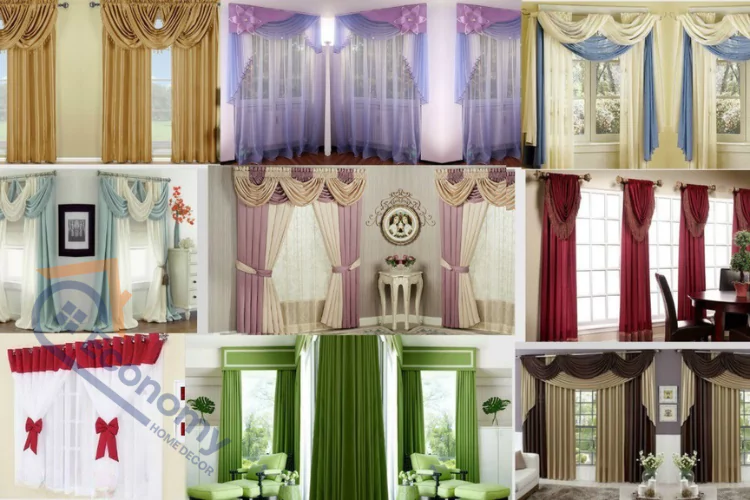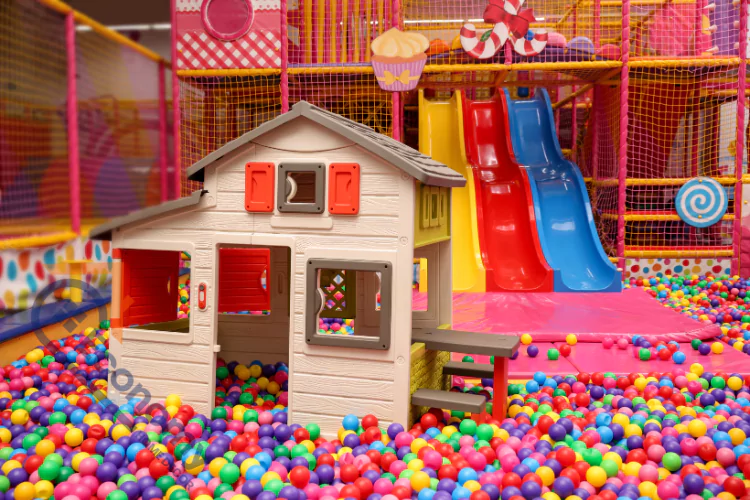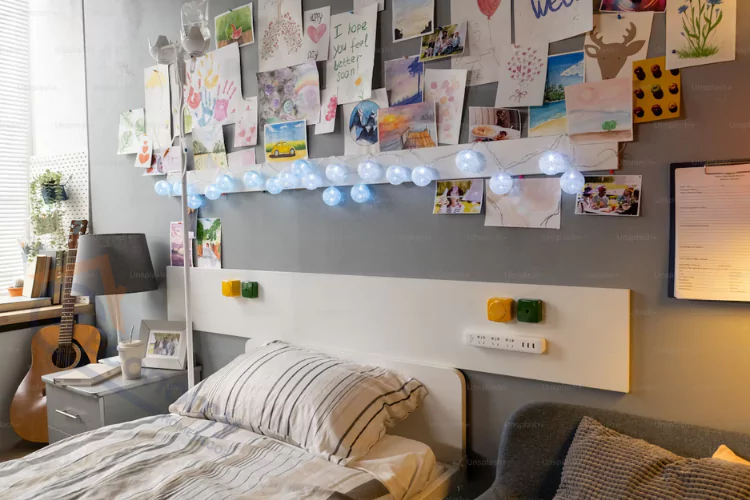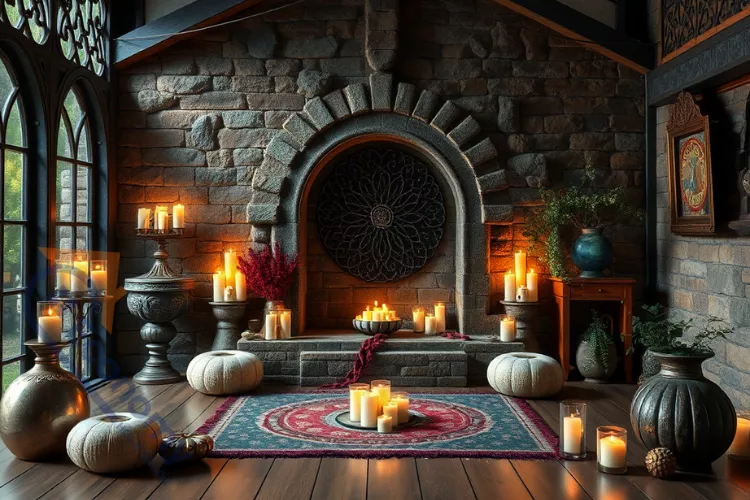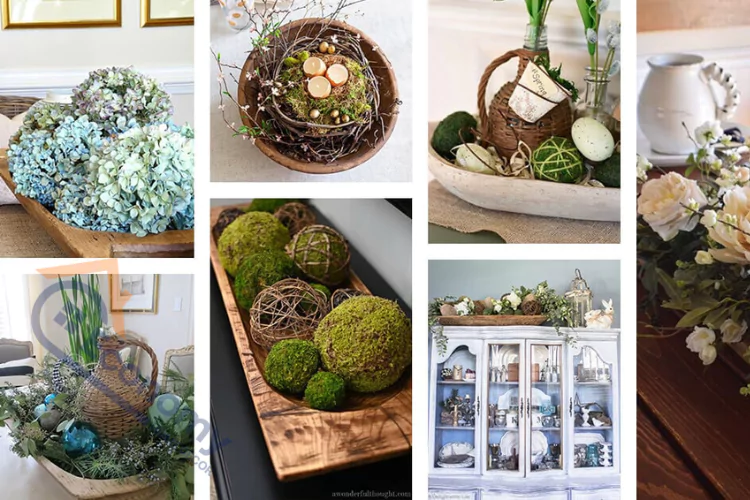Transforming your living space doesn’t always require major renovations or expensive furniture. Sometimes, the simplest changes make the biggest impact, and curtain design ideas are perfect examples of this principle. Whether you’re looking to create privacy, control light, or simply add a decorative touch, the right curtains can completely change the atmosphere of any room in your home.
From modern minimalist approaches to bold statement pieces, curtains offer endless possibilities for personal expression. They serve both functional and aesthetic purposes, making them one of the most versatile elements in interior design. The beauty of window curtain design ideas lies in their ability to complement existing decor while adding personality and warmth to your space.
In today’s design landscape, homeowners are increasingly creative with their curtain choices. Gone are the days when curtains were merely functional window coverings. Modern curtains design ideas encompass everything from smart home integration to eco-friendly materials, ensuring there’s a perfect solution for every lifestyle and budget.
Understanding Different Curtain Styles and Their Impact
The foundation of great curtain design ideas for living room spaces begins with understanding how different styles affect your room’s overall ambiance. Traditional curtains typically feature classic patterns, rich fabrics, and formal pleating techniques that create an elegant, timeless appearance. These styles work particularly well in formal dining rooms, master bedrooms, and traditional living spaces where sophistication is the primary goal.
Contemporary curtain styles embrace clean lines, neutral colors, and innovative materials. These modern curtain design ideas often incorporate technology, such as motorized systems or smart home integration, making them perfect for busy households. The emphasis is on functionality without sacrificing style, creating spaces that feel both current and comfortable.
Transitional styles bridge the gap between traditional and modern, offering the best of both worlds. These designs typically feature simplified traditional elements with contemporary colors and materials. This approach is particularly effective for homeowners who want to update their space gradually or those who live in homes with mixed architectural elements.
The psychological impact of curtain choices shouldn’t be underestimated. Light, airy fabrics in soft colors can make small spaces feel larger and more open, while heavy, dark curtains create intimacy and coziness. Understanding these effects helps you choose curtain designs ideas that support your room’s intended purpose and mood.
Living Room Curtain Design Ideas That Make a Statement
Your living room serves as the heart of your home, making living room curtain design ideas particularly important for setting the right tone. Floor-to-ceiling curtains create dramatic height and make windows appear larger, while also adding a sense of grandeur to the space. This technique works especially well in rooms with standard 8-foot ceilings, as it draws the eye upward and creates the illusion of more space.
Layering different curtain types can add depth and visual interest to your living room. Consider combining sheer panels with heavier drapes, allowing you to control light levels throughout the day while maintaining privacy. This approach also enables you to change the room’s appearance seasonally – lighter layers for spring and summer, with the option to close heavier curtains during colder months.
Color coordination plays a crucial role in successful curtain design ideas for living room implementations. Neutral tones like beige, gray, or cream provide a timeless backdrop that won’t compete with other decorative elements. However, don’t shy away from bold colors if they complement your existing palette – a rich burgundy or deep navy can add sophistication and warmth to neutral spaces.
Pattern mixing has become increasingly popular in modern interior design. Geometric patterns work well in contemporary spaces, while florals and traditional motifs suit more classic decor styles. The key is ensuring that patterns complement rather than compete with other elements in your room, such as throw pillows, artwork, or area rugs.
Bedroom Curtain Design Ideas for Rest and Relaxation
Creating a peaceful bedroom environment requires careful consideration of bedroom curtain design ideas that promote rest and relaxation. Blackout curtains are essential for quality sleep, blocking external light sources that can disrupt your natural sleep cycle. Modern blackout options come in various styles and colors, so you don’t have to sacrifice aesthetics for functionality.
Bed curtain design ideas extend beyond traditional window treatments to include canopy-style arrangements around the bed itself. These create an intimate, cozy sleeping area while adding dramatic visual appeal. Sheer bed curtains offer a romantic, dreamy quality without completely enclosing the space, while heavier fabrics provide more privacy and sound dampening.
Temperature control is another important consideration for curtain design ideas for bedroom spaces. Thermal curtains help regulate room temperature by providing insulation against hot summers and cold winters. This not only improves comfort but can also reduce energy costs over time. Look for curtains with thermal backing or multiple layers for maximum efficiency.
Motorized curtain systems are becoming increasingly popular in bedroom applications. These allow you to adjust light levels without getting out of bed, and can be programmed to open gradually in the morning, creating a natural wake-up sequence. While initially more expensive, many homeowners find the convenience and energy savings justify the investment.
Bathroom and Shower Curtain Design Ideas
Bathroom curtain design ideas present unique challenges due to moisture, humidity, and space constraints. However, these limitations shouldn’t prevent you from creating a stylish, functional bathroom environment. Waterproof and mildew-resistant materials are essential, but modern options include attractive fabrics treated with protective coatings that maintain their appearance over time.
Shower curtain designs ideas have evolved far beyond basic plastic liners. Today’s options include everything from artistic prints to luxury fabrics that rival those found in other rooms of the house. Consider coordinating your shower curtain with other bathroom textiles like towels and bath mats for a cohesive, designed look.
Privacy curtains for bathroom windows require special consideration due to the room’s intimate nature. Frosted glass films can provide privacy while still allowing natural light, but traditional curtains offer more design flexibility. Choose moisture-resistant fabrics and ensure proper ventilation to prevent mold and mildew growth.
Bathroom design ideas shower curtains can serve as focal points in otherwise neutral bathrooms. Bold patterns or vibrant colors can energize the space, while subtle textures add interest without overwhelming small areas. Consider the psychological effects of color – blues and greens promote calm and cleanliness, while warmer tones create a more spa-like atmosphere.
Modern and Contemporary Curtain Design Approaches
Curtain design ideas modern aesthetics emphasize simplicity, functionality, and clean lines. Minimalist approaches often feature solid colors, geometric patterns, or subtle textures that complement rather than dominate the space. The focus is on quality materials and expert craftsmanship rather than elaborate decorative elements.
Technology integration represents a significant trend in contemporary curtain design. Smart curtains can be controlled via smartphone apps, programmed to open and close at specific times, or integrated with home automation systems. These features appeal to tech-savvy homeowners who value convenience and energy efficiency.
Sustainable materials are increasingly important in modern design. Organic cotton, bamboo, linen, and recycled fabrics offer eco-friendly alternatives without compromising style or functionality. Many manufacturers now offer certifications that verify their environmental practices, making it easier for conscious consumers to make informed choices.
Industrial-inspired designs incorporate elements like exposed hardware, metal accents, and raw materials. These curtain ideas and designs work particularly well in loft apartments, converted warehouses, or homes with modern architectural features. The key is balancing industrial elements with softer textures to avoid creating cold or uninviting spaces.
Curtain Materials and Fabric Selection Guide
| Fabric Type | Best For | Light Control | Privacy Level | Maintenance |
|---|---|---|---|---|
| Linen | Casual, natural looks | Medium | Medium | Medium |
| Cotton | Versatile, all rooms | Variable | Variable | Easy |
| Silk | Formal, luxury spaces | Low-Medium | Medium | High |
| Velvet | Dramatic, cozy rooms | High | High | Medium |
| Polyester | Budget-friendly, durable | Variable | Variable | Easy |
| Sheer Fabrics | Light, airy feel | Low | Low | Easy |
Choosing the right fabric is fundamental to successful curtain interior design ideas. Natural fibers like cotton and linen offer breathability and a casual, relaxed appearance that works well in most residential settings. These materials accept dyes well, providing excellent color options, and they tend to age gracefully with proper care.
Synthetic fabrics like polyester and acrylic offer practical advantages, including fade resistance, easy maintenance, and often lower costs. Modern synthetic materials can mimic natural fibers convincingly while providing superior performance in challenging environments. They’re particularly suitable for high-humidity areas or homes with pets and children.
Blended fabrics combine the benefits of natural and synthetic materials, offering improved durability while maintaining the aesthetic appeal of natural fibers. These home curtain design ideas work well for homeowners who want the look of natural materials with enhanced practical benefits.
Weight considerations affect both appearance and function. Lightweight fabrics create flowing, elegant draping but may not provide adequate light blocking or privacy. Heavier fabrics offer better light control and insulation but may appear overwhelming in small spaces or with delicate window hardware.
DIY Curtain Design Ideas and Creative Solutions
DIY curtain design ideas offer budget-conscious homeowners the opportunity to create custom window treatments that perfectly match their style and space requirements. Simple no-sew techniques using fabric glue, iron-on hem tape, or clip-on rings can create professional-looking curtains without specialized equipment or skills.
Repurposing existing materials opens up creative possibilities while supporting sustainable design principles. Vintage scarves, unused bedsheets, or fabric remnants can be transformed into unique curtain panels with minimal investment. These approaches often result in one-of-a-kind pieces that reflect personal style better than mass-produced alternatives.
Stenciling and fabric painting allow homeowners to customize plain curtains with personal designs or patterns. These techniques work particularly well for children’s rooms, where whimsical designs and bright colors are welcome. Use fabric-specific paints and follow proper curing procedures to ensure designs remain vibrant through washing.
Hardware creativity can significantly impact the final appearance of DIY projects. Unusual curtain rods made from branches, pipes, or decorative molding can complement handmade curtains perfectly. Consider the overall design theme when selecting hardware – rustic materials suit farmhouse styles, while sleek metal options work better with modern aesthetics.
Color Coordination and Pattern Matching Strategies
Successful curtains and drapes design ideas rely heavily on thoughtful color coordination that complements existing room elements. The 60-30-10 rule provides a reliable framework: 60% dominant color (walls, large furniture), 30% secondary color (curtains, area rugs), and 10% accent color (accessories, artwork). This creates visual balance while allowing curtains to make an appropriate impact.
Monochromatic schemes use variations of a single color family, creating sophisticated, cohesive appearances. This approach works particularly well in minimalist or contemporary settings where subtle variations in tone and texture provide visual interest without overwhelming the space. Consider using different shades of the same color for curtain panels and tiebacks.
Complementary colors (opposites on the color wheel) create vibrant, energetic environments but require careful application to avoid overwhelming the space. Use one color as the dominant choice with the complement as an accent, perhaps in curtain hardware or trimming details. This approach works well in casual family areas where energy and warmth are desired.
Pattern scaling affects room perception significantly. Large patterns can make small rooms feel cramped, while tiny patterns may appear busy or insignificant in large spaces. Choose pattern sizes that complement your room’s proportions, and consider the viewing distance – patterns that look perfect up close may lose impact when viewed from across the room.
Window Treatment Combinations and Layering
Window design ideas with curtains often involve layering different treatments for maximum versatility and visual appeal. Combining blinds or shades with curtain panels allows precise light control while maintaining decorative impact. This approach is particularly effective in bedrooms where both complete darkness and filtered natural light may be needed at different times.
Valance and cornice combinations add architectural interest while framing curtain panels beautifully. These treatments can hide curtain rod hardware while providing opportunities for additional color, pattern, or texture introduction. Consider the room’s ceiling height when selecting valance styles – deeper valances work better in rooms with higher ceilings.
Sheer and opaque layering provides ultimate flexibility for privacy and light control. Install sheer panels closest to the window with heavier curtains on an outer track or rod. This system allows you to maintain natural light during the day while ensuring complete privacy when needed. Motor systems can operate both layers independently for maximum convenience.
Seasonal layering strategies accommodate changing needs throughout the year. Light, airy fabrics for spring and summer can be supplemented with heavier insulating panels during colder months. This approach reduces energy costs while keeping your decor fresh and seasonally appropriate.
Custom and Professional Curtain Design Ideas
Custom curtain design ideas offer the ultimate in personalization and perfect fit. Professional designers can create treatments that address specific architectural challenges, unusual window sizes, or unique style requirements that standard retail options cannot accommodate. While initially more expensive, custom curtains often provide better long-term value through superior materials and construction.
Professional installation ensures proper hanging and optimal performance from your curtain investment. Experienced installers understand weight distribution, proper hardware selection, and mounting techniques that maximize both appearance and functionality. They can also advise on maintenance requirements and adjustment procedures.
Measuring accuracy is crucial for successful custom curtains. Professional services typically include precise measuring as part of their design package, eliminating costly mistakes that can occur with DIY measurements. They also understand how different fabric types behave when hung, adjusting measurements accordingly for optimal results.
Quality hardware selection significantly impacts the longevity and performance of custom treatments. Professional designers have access to commercial-grade systems that may not be available through retail channels. These systems often include warranties and replacement parts availability that ensure long-term satisfaction with your investment.
Specialty Room Applications and Unique Spaces
Dining room curtain design ideas require consideration of both formal entertaining needs and daily family use. These spaces often benefit from treatments that can transition from casual to elegant depending on the occasion. Consider curtains with decorative tiebacks that can create more formal swags for special dinners, or motorized systems that adjust automatically for different lighting needs.
Home office curtains must balance natural light needs with computer screen glare concerns. Anti-glare treatments or adjustable systems allow optimal lighting conditions throughout the work day. Consider the psychological effects of color in work environments – blues and greens promote focus and calm, while warmer tones can increase energy and creativity.
Arch curtain design ideas address the unique challenges of curved or unusual window shapes. Custom solutions often work best for these applications, but creative standard curtain adaptations can also be effective. Flexible curtain rods or multiple straight sections can follow curved shapes reasonably well with proper installation techniques.
Multi-story windows in staircases or entryways require special consideration for both safety and visual impact. Professional installation is often recommended due to the heights involved and the need for specialized equipment. These dramatic windows offer opportunities for equally dramatic curtain treatments that serve as focal points for the entire area.
Maintenance and Care for Different Curtain Types
Proper maintenance extends the life and appearance of any curtain designs ideas implementation. Different fabrics require specific care approaches – natural fibers may need professional cleaning, while synthetic materials often tolerate machine washing. Understanding care requirements before purchase helps ensure realistic expectations and proper budgeting for maintenance costs.
Dust and allergen control benefits from regular curtain maintenance. Weekly vacuuming with upholstery attachments removes surface dirt and prevents embedded particles that can cause fabric degradation. This is particularly important for households with allergies or respiratory sensitivities, where clean window treatments contribute to overall indoor air quality.
Seasonal cleaning schedules help maintain curtain appearance and functionality. Deep cleaning before winter ensures treatments are ready for increased use during months when windows remain closed more frequently. Spring cleaning removes winter’s accumulated dust and prepares lighter fabrics for summer’s increased natural light exposure.
Storage considerations for seasonal curtains prevent damage and ensure they’re ready when needed. Clean curtains thoroughly before storage, use breathable storage containers or garment bags, and include moisture absorbers in humid climates. Proper folding or rolling techniques prevent permanent creases that may be difficult to remove later.
Budget-Friendly Curtain Design Ideas
Creating stunning home design curtain ideas doesn’t require unlimited budgets. Strategic shopping during sales seasons, particularly January white sales and back-to-school promotions, can yield significant savings on quality materials. Many retailers offer end-of-season clearances that provide excellent values on current styles.
Outlet stores and factory direct sources often carry designer fabrics at reduced prices. While selection may be limited, patient shoppers can find exceptional values on high-quality materials. Online marketplaces also provide access to wholesale pricing for homeowners willing to purchase larger quantities.
Phased implementation strategies allow homeowners to upgrade window treatments gradually. Start with the most visible or frequently used rooms, then expand the design theme to other areas as budget permits. This approach also allows time to live with initial choices and make refinements before committing to entire-house treatments.
Simple updates to existing curtains can provide fresh looks without complete replacement. New hardware, tiebacks, or trim additions can modernize older treatments. These modifications often cost a fraction of new curtains while providing substantial visual impact.
Key Takeaways
- Curtain design ideas offer endless possibilities for personalizing and improving your home’s aesthetics and functionality
- Consider both style and practical needs when selecting window curtain design ideas for different rooms
- Layering different curtain types provides maximum flexibility for light control and privacy
- Quality materials and proper installation significantly impact the longevity and performance of window treatments
- Custom solutions may offer better value than standard options for unusual windows or specific requirements
- Regular maintenance extends the life and appearance of all curtain types
- Budget-friendly options exist for every style preference and room requirement
Frequently Asked Questions
Measure from your desired rod placement to where you want curtains to end. Floor-length curtains should barely touch or float 1/2 inch above the floor. For a more formal look, allow 1-2 inches of fabric to puddle on the floor.
Curtains are typically lighter, unlined window treatments, while drapes are heavier, lined, and often pleated. Drapes provide better light control and insulation but cost more and require more maintenance.
Curtains should be 1.5 to 3 times wider than your window for proper fullness. Multiply your window width by 2-2.5 for standard fullness, or 2.5-3 for luxurious, full gathering.
Yes, but maintain consistency in color, pattern scale, or fabric type. Different curtain lengths or styles on various windows can work if they share common elements that tie the room together.
Light, neutral colors make small rooms appear larger. Whites, creams, light grays, and soft pastels reflect light and create openness. Avoid dark colors or busy patterns that can make spaces feel cramped.
Dust curtains weekly with a vacuum brush attachment. Deep clean every 3-6 months depending on fabric type, room usage, and household factors like pets or smoking. Professional cleaning may be required for delicate fabrics.
Conclusion
The world of curtain design ideas offers unlimited opportunities to transform your living spaces while addressing practical needs for privacy, light control, and energy efficiency. From bathroom curtain design ideas that handle moisture challenges to elegant living room curtain design ideas that serve as focal points, the right window treatments can dramatically impact your home’s atmosphere and functionality.
Whether you choose DIY curtain design ideas for budget-conscious creativity or invest in custom curtain design ideas for perfect fit and luxury materials, the key is understanding how different styles, materials, and installation approaches serve your specific needs. Modern technology continues to expand possibilities with smart home integration and innovative fabrics that offer improved performance without sacrificing aesthetics.
Remember that successful curtain design goes beyond mere decoration – it’s about creating environments that support your lifestyle while reflecting your personal taste. By considering factors like room usage, architectural features, maintenance requirements, and long-term design goals, you can select curtains design ideas that provide years of satisfaction and enhance your daily living experience.
The investment in quality window treatments pays dividends in improved comfort, energy efficiency, and home value. Whether you’re updating a single room or redesigning your entire home, thoughtful curtain selection provides one of the most impactful and cost-effective ways to achieve your interior design goals.

